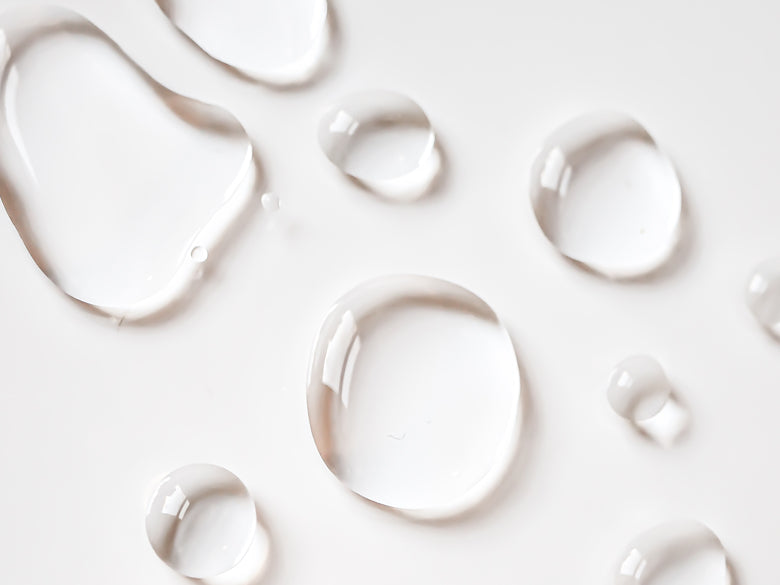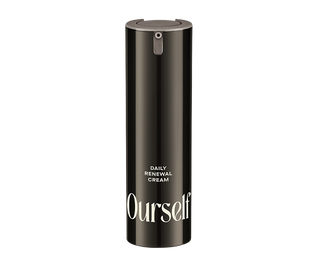The Role of Hyaluronic Acid in Healthy Skin and the Aging Process

Authors: Amir Moradi, MD (Moradi Research), Robert Love, PhD (GLO Pharma), Kara Pennington, PA-C, MMS (GLO Pharma)
The aging of the skin is a multifactorial process consisting of intrinsic and extrinsic mechanisms. A youthful skin has excellent elasticity, turgor and luminesce mostly due to its high-water content (Fig. 1). Daily external injury, in addition to the normal process of aging, causes a loss of moisture. The key molecule involved in skin moisture is hyaluronic acid (HA) because of its unique capacity to bind and retain water.
Figure 1. Structure of healthy human skin, indicating the primary structural components.

HA is a long, polar polymer composed of repeating disaccharide (sugar) units (Fig. 2). HA molecules can hold twice their weight in water, thus 1 gram of HA can bind 2 grams of water tightly [1]. This makes HA act like a very large sponge. Human skin contains roughly 50% of the body’s total HA, and as a result skin is about 0.1% HA by weight.
Figure 2. Simplified structure of one molecule of hyaluronic acid.

Besides external factors that lead to dryness of the skin there are also internal factors which regulate both synthesis and degradation of HA molecules at different layers of skin. The most dramatic histochemical change in aging skin is the gradual disappearance of HA in the epidermis (outer layer), even though some HA remains in the deeper dermis layer. This parallels steady loss of collagen and elastin (Fig. 3). All of the above phenomena contribute to the dehydration, atrophy and loss of elasticity that characterizes aged skin and wrinkle formation [2-4].
Figure 3. Skin loses its collagen, elastin and HA with age. The resulting loss of hydration, elasticity, and firmness leads to lines and wrinkles.

Ourself HA+ Replenishing Serum has been designed to increase hyaluronic acid concentration in the skin at multiple layers and in different ways:
- Initial step: Penetration of the stratum corneum (outermost layer of dead cells), which is usually impermeable to molecules larger than about 500 Daltons (roughly twice the size of estrogen or testosterone). Our proprietary vesicles can deliver a mixture of large HA molecules through this first challenging barrier.
- Immediate effects: The proprietary vesicles carry two different sizes of HA molecules to different layers, increasing the skin water content in a relatively short time. In clinical trials, subjects reported a significant improvement in skin quality and reduction of fine lines (Fig. 4).
- Long Term effects: The vesicles deliver additional, specialized peptides and macromolecules into the skin that can help boost the natural production of hyaluronic acid, collagen and elastin, and simultaneously decrease destruction of existing hyaluronic acids. Examples of the long term effects of HA+ Replenishing Serum can be seen in Figures 5 and 6, where it appears more youthful and brighter with decrease in pore size.
Figure 4. Significant improvement in skin quality and reduction of fine lines and wrinkles. (A) at baseline; (B) after 2-weeks of application.

Figure 5. Significant improvement in overall appearance, including brighter complexion and decrease in pore size. (A) at baseline; (B) after 12-weeks of application.

Figure 6. Significant improvement in overall appearance including brighter complexion and decrease in pore size; (A) at baseline; (B) after 12-weeks of application.

In summary, hyaluronic acid is essential for maintaining the healthy condition of skin. Healthy skin has the right balance between the formation of new skin cells and the elimination of the aged and damaged cells. Wrinkles, poor texture, patchy pigmentation, and redness are signs that signify loss of balance, where damaged and aged cells are not being replaced by younger and healthy skin cells. Ourself HA+ Replenishing serum helps reestablish the balance necessary for a healthy skin.
References
1. Smejkalova D, Angeles GH, Ehlova T. Hyaluronan (Hyaluronic Acid): A natural moisturizer for skin care. In Harry's Cosmeticology 9th Edition. 2015; Vol. 2. Part 4.1.3. Chemical Publishing Co.
2. Coleman SR, Grover R. The anatomy of the aging face: volume loss and changes in 3- dimensional topography. Aesthet Surg J. 2006 Jan-Feb;26(1S):S4-9. doi: 10.1016/j.asj.2005.09.012. PMID: 19338976
3. Papakonstantinou E, Roth M, Karakiulakis G. Hyaluronic acid: A key molecule in skin aging. Dermatoendocrinol. 2012 Jul 1;4(3):253-8. doi: 10.4161/derm.21923. PMID: 23467280; PMCID: PMC3583886.
4. Stern R, Maibach HI. Hyaluronan in skin: aspects of aging and its pharmacologic modulation. Clin Dermatol. 2008 Mar-Apr;26(2):106-22. doi: 10.1016/j.clindermatol.2007.09.013. PMID: 18472055.
Fig. 1 Shutterstock_1707589036.jpg
Fig. 2 http://www.hyland.center
Fig. 3 Shutterstock_495532039.png
